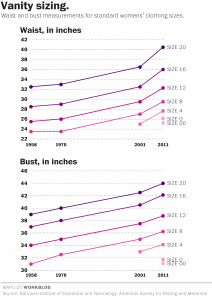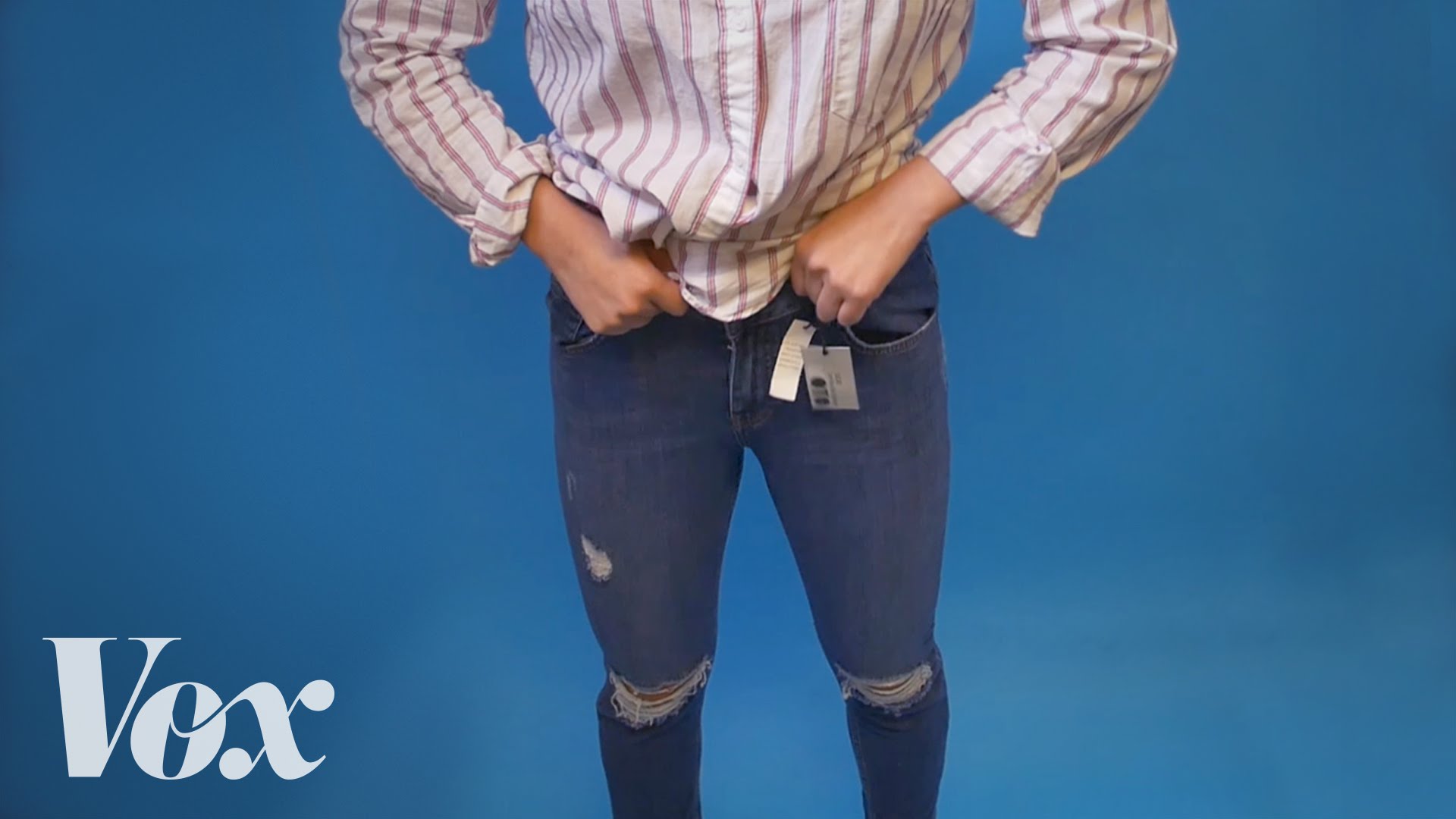
Here are some numbers that illustrate the insanity of women’s clothing sizes: A size 8 dress today is nearly the equivalent of a size 16 dress in 1958. And a size 8 dress of 1958 doesn’t even have a modern-day equivalent — the waist and bust measurements of a Mad Men-era 8 come in smaller than today’s size 00.
These measurements come from official sizing standards once maintained by the National Bureau of Standards (now the National Institute of Standards and Technology) and taken over in recent years by the American Society of Testing and Materials.
Vanity sizing, or size inflation, is the phenomenon of ready-to-wear clothing of the same nominal size becoming bigger in physical size over time. This has been documented primarily in the United States and the United Kingdom. Vanity sizing tends to occur where clothing sizes are not standardized, such as the U.S. market. In the United States, although clothing size standards exist (i.e., ASTM), most companies do not use them any longer.
Size inconsistency has existed since at least 1937. In Sears‘s 1937 catalog, a size 14 dress had a bust size of 32 inches (81 cm). In 1967, the same bust size was a size 8. In 2011, it was a size 0. Some argue that vanity sizing is designed to satisfy wearers’ wishes to appear thin and feel better about themselves. Designer Nicole Miller introduced size 0 because of its strong California presence and to satisfy the request of many Asian customers. It introduced subzero sizes for naturally petite women. However, the increasing size of clothing with the same nominal size caused Nicole Miller to introduce size 0, 00, or subzero sizes. (The UK’s Chief Medical Officer has suggested that vanity sizing has contributed to the normalisation of obesity in society.)
In 2003, a study that measured over 1,000 pairs of women’s pants found that pants from more expensive brands tended to be smaller than those from cheaper brands with the same nominal size.
Centers for Disease Control and Prevention data show that the average American woman today weighs about as much as the average 1960s man. And while the weight story is pretty straightforward — Americans got heavier — the story behind the dress sizes is a little more complicated, as any woman who’s ever shopped for clothes could probably tell you.

